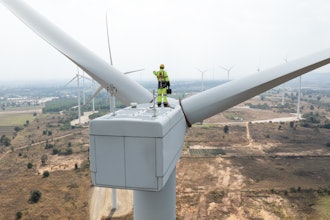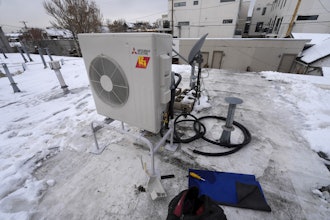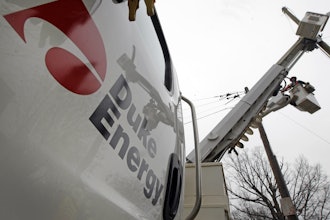
NEW YORK (AP) — The federal government is investing in machines that suck giant amounts of carbon dioxide out of the air in the hopes of reducing damage from climate change.
The Department of Energy said Thursday it will release $3.5 billion to groups developing direct air capture and other technologies that remove carbon dioxide, which when released into the atmosphere causes global warming.
Climate scientists say humans have already allowed too much carbon dioxide into the atmosphere to prevent dangerous rises in global temperatures. They say on top of curbing emissions we must also remove carbon dioxide from the air that's already been released.
“This past month we saw the highest levels of CO2 emissions in the atmosphere in history, underscoring the fact that our efforts to tackle climate change will be inconsequential if we don’t act now to manage the greenhouse gas emissions that are currently putting public health and our environment at risk,” said Energy Secretary Jennifer Granholm in a statement.
Companies such as Carbon Engineering and Climeworks are building direct air capture facilities that use giant fans to suck carbon dioxide out of the air and store it underground, or capture it to make synthetic fuel, soft drinks or concrete. But the facilities built so far remove just a tiny fraction of the carbon dioxide that scientists say is necessary to make a difference.
Developers are hoping the investment can help boost an industry that will need to scale up.
“If you want to reduce long-run climate risks, we will need to take CO2 out of the air,” said David Keith, professor of environmental science and engineering at Harvard and founder of Carbon Engineering, which designed a plant that captures carbon dioxide and turns it into synthetic fuel. “The best way to figure out what these methods cost and what their environmental impacts might be is to actually go build hardware that can stand up to public scrutiny.”
Carbon Engineering is working with Oxy Low Carbon Ventures and 1PointFive to develop a facility in the Permian Basin which would capture 1 million tons of CO2 annually.
The DOE money will support four large-scale regional direct air capture hubs that will include a network of carbon dioxide removal projects that each have the capacity to remove 1 million tons of carbon dioxide annually. Those projects will prioritize community engagement and environmental justice, the DOE said.
“I expect the impacts on health and land use in communities will be an important consideration,” said Roger Aines, energy program chief scientist at Lawrence Livermore National Lab, noting that facilities would use land in communities and would run on renewable energy, which would mean placing solar panels or wind turbines around them.
“The time is right for this,” Aines said. “And the only way to really know whether we’re going to like this kind of approach is to try it out.”





















